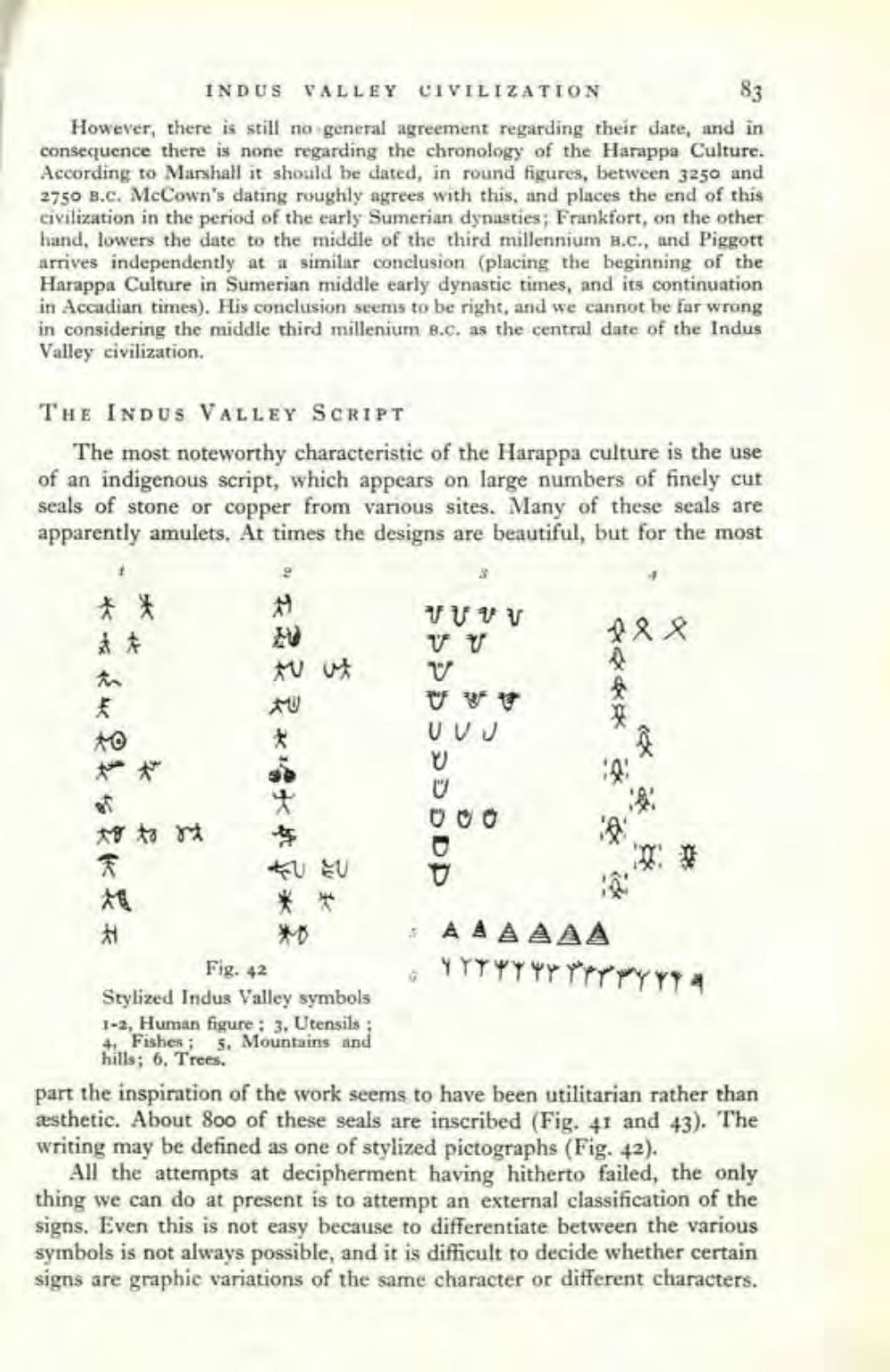________________
INDUS VALLEY CIVILIZATION
However, there is still no general agreement regarding their date, and in consequence there is none regarding the chronology of the Harappa Culture. According to Marshall it should be dated, in round figures, between 3250 and 2750 B.C. McCown's dating roughly agrees with this, and places the end of this civilization in the period of the early Sumerian dynasties; Frankfort, on the other hand, lowers the date to the middle of the third millennium a.c., and Piggott arrives independently at a similar conclusion (placing the beginning of the Harappa Culture in Sumerian middle early dynastic times, and its continuation in Accadian times). His conclusion seems to be right, and we cannot be far wrong in considering the middle third millenium 8.c. as the central date of the Indus Valley civilization.
THE INDUS VALLEY SCRIPT
The most noteworthy characteristic of the Harappa culture is the use of an indigenous script, which appears on large numbers of finely cut seals of stone or copper from various sites. Many of these seals are apparently amulets. At times the designs are beautiful, but for the most
*<*14245RK
** **
to to t
F
柑
#
A
A
ささ
AU U
***.
ZU ZU
**
*0
Fig. 42 Stylized Indus Valley symbols
1-2, Human figure: 3, Utensils; 4 Fishes; 5. Mountains and hills; 6. Trees.
G
บบบบ VV
V
v v v
UV J
U
U
000
4x8
4444
AAAAAA ۲۲۲۲۲۲۲۳۴۳۳۲۲۴۶
part the inspiration of the work seems to have been utilitarian rather than æsthetic. About 800 of these seals are inscribed (Fig. 41 and 43). The writing may be defined as one of stylized pictographs (Fig. 42).
All the attempts at decipherment having hitherto failed, the only thing we can do at present is to attempt an external classification of the signs. Even this is not easy because to differentiate between the various symbols is not always possible, and it is difficult to decide whether certain signs are graphic variations of the same character or different characters.




